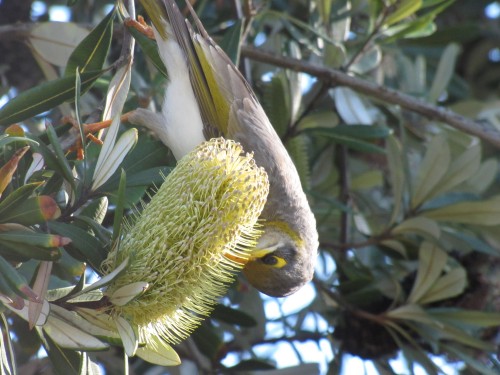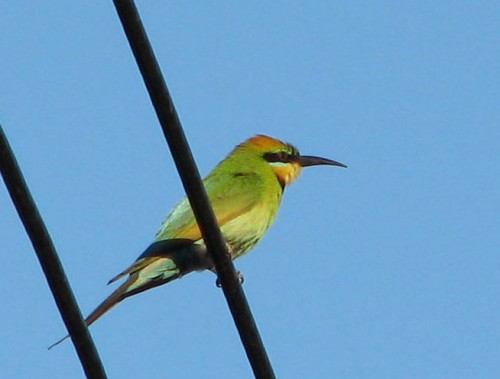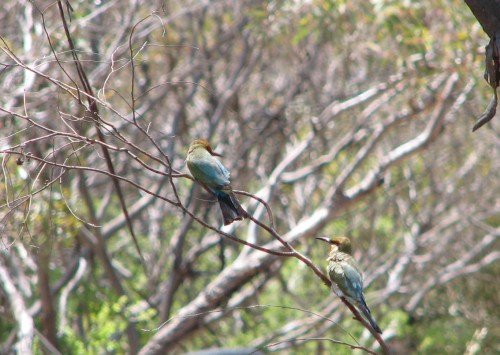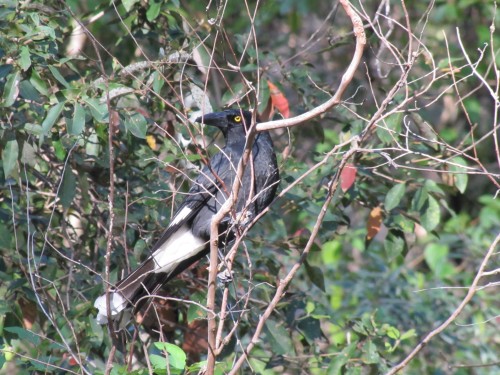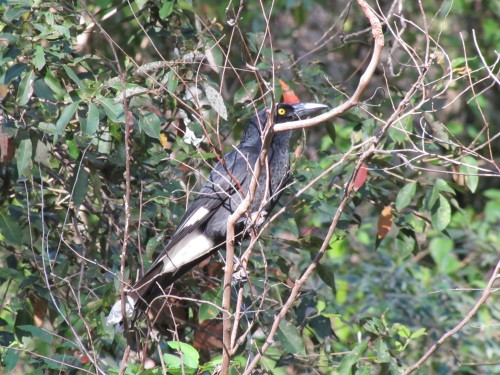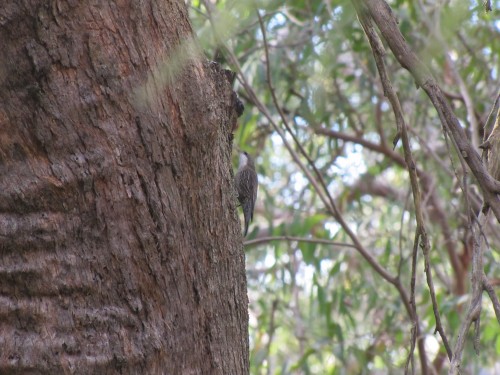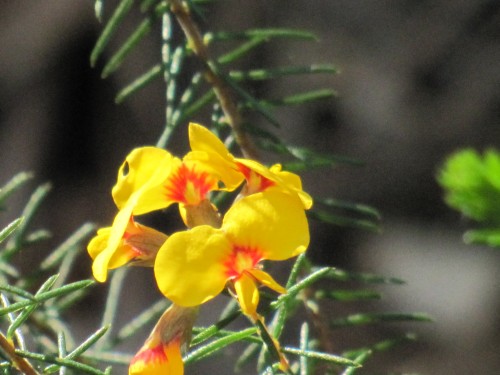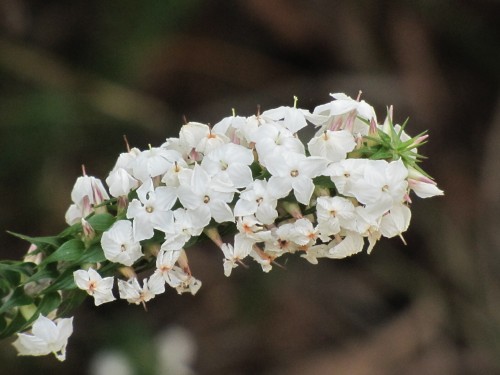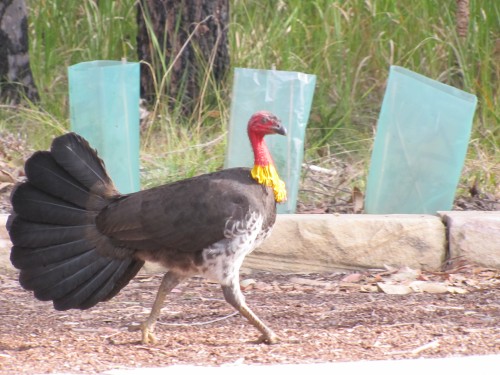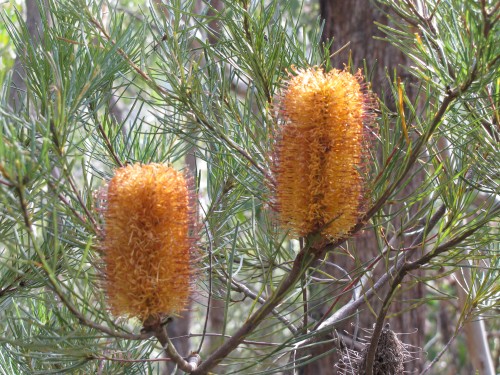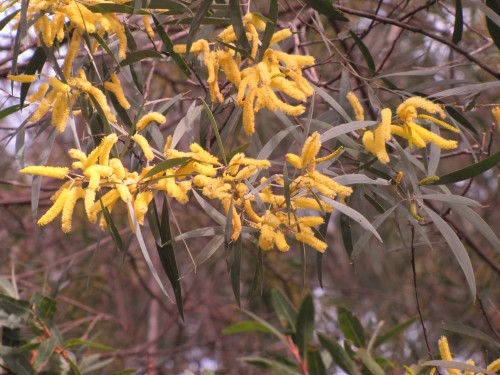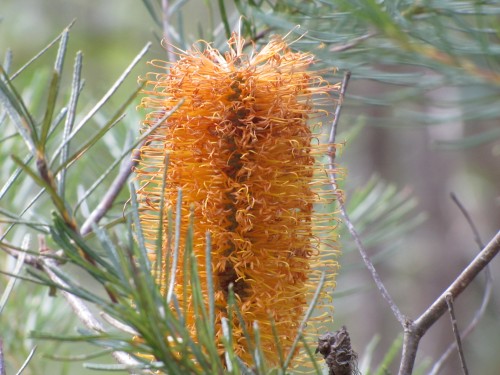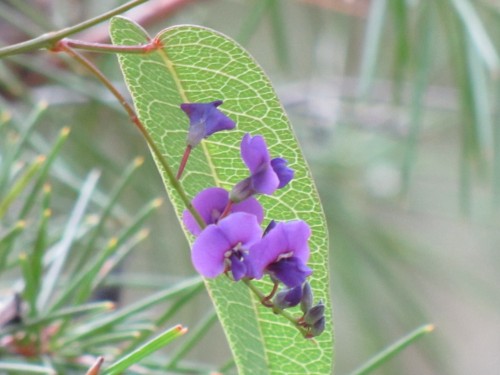Time for a sweet break
The various species of banksias are often well favoured by our native birds and especially our many honeyeater species. Banksias are often bushes or small trees with dense foliage, ideal for many of our smaller birds like finches, thornbills and the like because the leaves provide shelter from predators such as hawks and eagles. The dense leaf cover also provides ideal protection for nesting sites.
Banksias are also good producers of nectar in their many large flowers. The flower shown in the photo above is on the smaller side; many are much bigger. The Yellow-throated Miner, one of the many honeyeater species in Australia, obviously loves this one. The photo was taken in the grounds of the Western Plains Zoo in Dubbo, New South Wales.
The Rainbow Bee-eaters have arrived
We heard the Rainbow Bee-eaters late this afternoon.
My wife and I always love hearing and seeing the first Rainbow Bee-eaters of the season. Sometime in early spring this species moves from northern Australia to the southern parts of the country to breed.
They are unusual in their nesting habit: they make a small tunnel in the earth, on the graded sides of roads or in the banks of creeks, rivers and wash-aways. This tunnel can be up to 60cm long and ends in a small chamber where they lay their eggs. It has been quite a few years since they last nested on our property. I hope they will stay and make a nest this year.
Pied Currawong and that glaring eye
While we were having afternoon tea in the Lane Cove National Park in Sydney a Pied Currawong flew into a bush nearby. It stayed for a few moments before flying off again. When ever I see this species – and its cousin the Grey Currawong – I am taken by that glaring eye. It almost looks malevolent in intent.
Now it is very unscientific of me to assign human characteristics to a bird, but I can get away with it here because this doesn’t pretend to be a scientific site by any definition one cares to dredge up. I just want to share with the world my bird sightings, illustrating them where possible with photos I have taken.
Having said that, I must say that describing the currawong as being malevolent from a human point of view is not all that far from the truth. Granted – the currawong is not intentionally being nasty; it just seems that way from the viewpoint of compassionate humans – and a whole host of small birds and animals.
Currawongs eat a wide range of creatures, including smaller birds, bird eggs and nestlings, small reptiles, spiders, insects and will even steal take food at picnics, fruit from trees and garbage. All that may seem nasty and cruel to compassionate, animal-loving humans, but for the currawong it spells survival. The nestling of a honeyeater may mean the survival of the nestling of the currawong. It’s a huge, wild, nasty world out there.
And I still think its eye is rather evil.
White-throated Treecreeper
On my recent visit to the Lane Cove National Park in Sydney a spent a half hour or so slowly walking along one of the roads through the park, trying to find and photograph some of the birds present in the park. It was a rather frustrating time and although I managed to add a few birds to my list, I wasn’t very successful at getting many photos.
The above shot of a White-throated treecreeper – a poor shot at that – was the only one I can use here. So instead of returning to the car without any photos, I turned my attention to some of the flowers.
Ku-ring-gai Wildflower Gardens, Sydney
One of our favourite places to visit when in Sydney staying with family is the Ku-ring-gai Wildflower Gardens on Mona Vale road at St Ives. These gardens are adjacent to the Ku-ring-gai National Park, another great place to visit. These gardens are about a half hour drive from my son’s home so it is a convenient place to visit when we are in Sydney.
The gardens are typical bushland of the area with some areas set aside for picnic grounds. The Friends of the Gardens group also plant and maintain a few small areas displaying plants of the area but not actually present in the gardens. The group frequently put on a display of plants in flower in the Visitor Centre.
I have found that the bird life in the gardens can vary greatly according to the season and what is flowering at the time. On occasions I have been very disappointed with my list. On our most recent visit in July of this year I was pleasantly surprised. The only downside was getting only one good bird photo – that of the Australian Brush-turkey shown above. So instead, I have included some of my flower photos instead.
Here is a list of the birds I saw or heard, in the order recorded:
- Australian Brush-turkey
- Eastern Whipbird
- Weebill
- Rainbow lorikeet
- Noisy Miner
- Pied Currawong
- Grey Butcherbird
- Silvereye
- Striated Pardalote
- Grey Fantail
- Variegated Wren
- Eastern Yellow Robin
- Yellow-faced Honeyeater
- Striated Thornbill
- Spotted Pardalote
- Laughing Kookaburra
- White-browed Scrubwren
- White-throated Treecreeper
- Brown Cuckoo-dove
